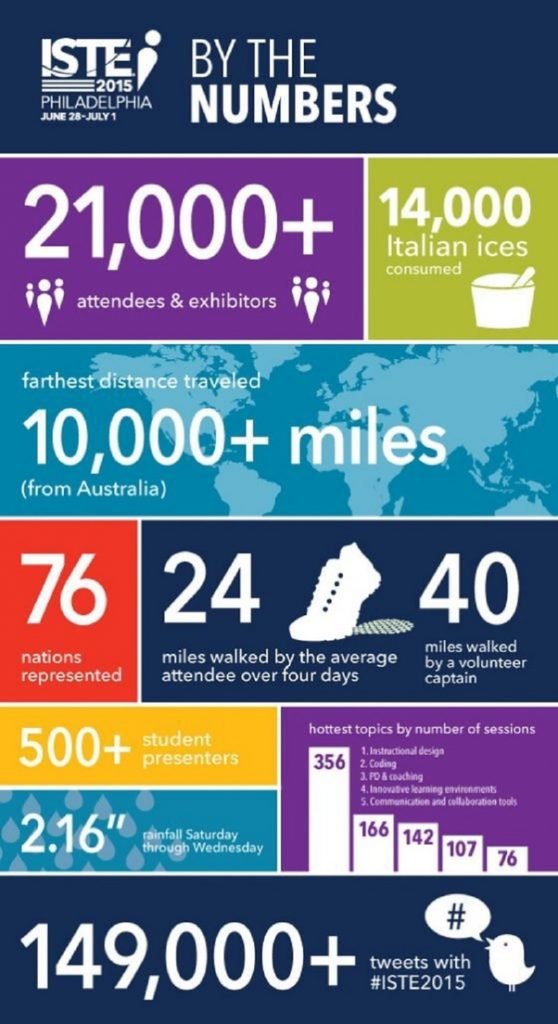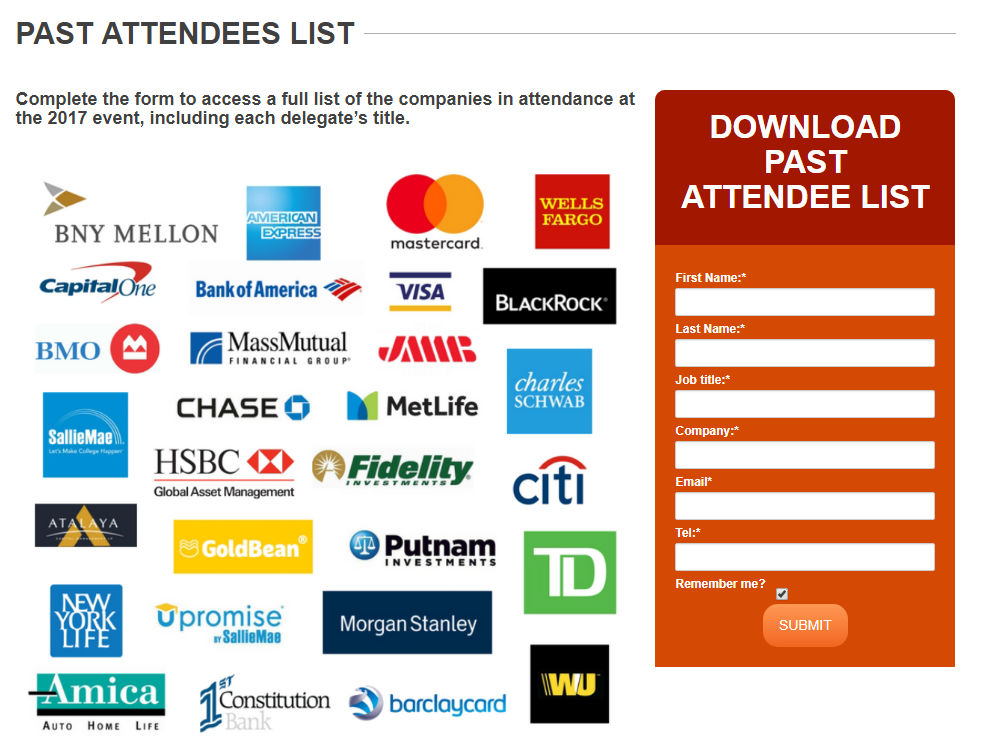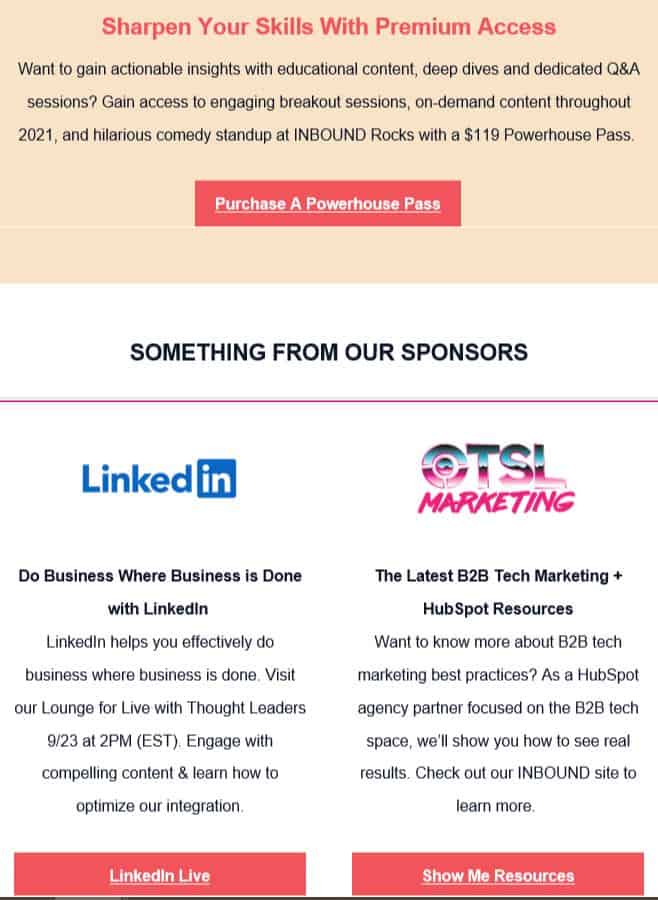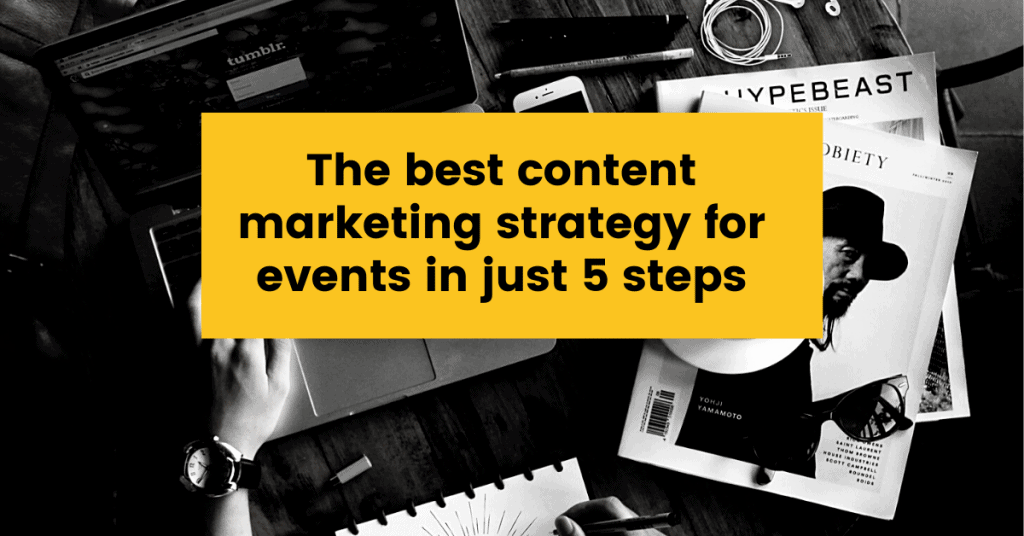Events are a big part of the marketing strategy, helping fulfil objectives of lead generation, lead nurturing, conversions and advocacy (so across all stages of the marketing funnel). They can inform, engage, entertain, activate and wow audiences, giving them the chance to interact with brands in unique ways.
I believe events can be compared to icebergs. What is visible to the attendees is only part of the planning and hard work happening behind the scenes. In this article, we’ll be talking about the marketing plan for an event and specifically the content part. The below points are equally relevant for live and virtual events.
The event marketing plan is that document that sets the strategy to attract registrations and attendees. It contains the tactics, deadlines, key messages and KPIs to be reached for the event.
If you want to read more about the event marketing plan, we’ve written about it here.
An important part of it will be the content marketing strategy for the event, to promote the topic, the speakers and the activities taking place on the day. This is meant to increase the interest for the event, generate leads and increase attendance rates.
What does a good content marketing strategy include?
Any marketing strategy (be it for events or for leads) will begin with an answer to the questions:
- what does our target audience care about?
- what action do we want them to take?
The best content is at the intersection of the 2 areas, where you create the premises for the exchange. You give the audience what they want whilst also offering them a solid reason to take the action you want them to take.
A good content strategy will:
- Include a variety of content pieces that are linked to the topics addressed at the event and your customer personas
- Consider a promotion plan for the content you’re producing
The second part is equally important to the first one. You can create the greatest piece of content ever, but if no one discovers it, only you and your team will know how great it is.
So let’s see, what are the 5 steps to create a killer content marketing strategy for events:
- Research content topics
- Develop different types of content
- Choose your angles for the content
- Tailor content for events to customer interests and CTAs
- Analyse performance indicators for content marketing with monitoring tools
1. Research content topics
But before even considering what type of content to create, it’s time to research the topics. You can work closely with your production, sales and/or delegates sales team to ensure you understand the main topics for your target market.
If you’re the only one in your team working on the event, do your research online and through key accounts. Look for similar events, search social media for hashtags and check out the most engaging content.
Also, look at the profiles of your target key accounts, to get an understanding of what they’re talking about. You can even try to arrange calls or quick chats with influencers or key accounts from the industries you’re targeting to survey the most important topics for them.
Your content should be based on your customer personas, so that it addresses the pain points they have.
If your event targets delegates in multiple industries or job functions, you may have to adapt your approach. For example, content about creating a strategy that integrates with other functions may be more relevant for senior professionals than for executives. Meanwhile, information about implementing the strategy will be relevant for executives.
You should also use analytics to ensure you have a good understanding of the content you should be preparing. Tools like Buzzsumo can show you what content is performing best. Social listening tools like Mention will give you insight into trending topics and what peers, competitors and influencers are posting on their channels.
At this point, you should have a list of topics you can address. Next: look at the types of materials you will be creating.
If you think the list is too big, try to narrow it down using the same methods of research mentioned above. This way, you highlight the areas with enough interest and where there is a gap in know-how. You don’t want to create content that already exists unless you have an unique angle.
Content marketing is complex and time consuming, so if you don’t have an internal resource for this, you can budget a freelancer (on platforms such as Upwork or Freelancer.com) or a content marketing agency.
2. Develop different types of content
Content can also take many shapes:
- Written (with or without imagery) – blog posts, articles, interviews, articles, interviews, white papers, eBooks, etc
- Video – webinars, video interviews, presentations, animations, etc
- Sound – podcasts
- Image – infographics, roadmaps, etc
- Interactive – quizzes, Q&As, calculators, etc
The type of content you create to promote your event will depend on the time and human resources you have available. A whitepaper will take longer to produce than a blog post, whereas for an interview you’d need availability from a speaker or influencer in your industry.
My recommendation would be to aim to produce at least 2 different types of content, to address more segments of your audience. Not everyone likes reading articles as not everyone likes viewing videos. If you only do 1 type of these, you’ll lose the other part of the audience.
Lucky for you, content can be repurposed. For example:
- a recorded webinar can become a short video
- a video can become an article, highlighting the main ideas
- an article can become an infographic, where the main ideas are translated into graphic format
- an infographic can be expanded into an article
- the results of a quiz can become a research paper, etc.
Don’t just do 1 piece of content then start over, do 1 piece of content and think how it can keep on giving.
Here is some further reading from SEMrush about repurposing content. Plus, check out what type of content performs better across different channels.
3. Choose your angles for the content
Now that you have your resources in place and an idea of what of type you can create, let’s think about the objective they help achieve for attendees or angles you can take.
Why do people attend events?
- Learn
- Network
- Sell or buy solutions
The content you create for the event should address these needs. It shouldn’t be salesy, it should aim to inform the audience and to position your company as a thought leader.
Ultimately, the goal of the content you are creating for your event is to get people to attend it. But if you keep talking about what’s important for you – how many great speakers you have, the amazing topics they will be addressing and the list of companies attending, you might miss out. There are different angles you can present in your thought leadership pieces and infographics, which we present below.
4. Tailor content for events to customer interests and CTAs
You should mix content that is purely informative to content that is directly linked to your event, ensuring you address the 3 reasons delegates attend (learn, network, sell or buy). Also, ensure your content is tailored to your personas, since leads that are looking to attend the event will be interested in different content compared to leads that are looking to sponsor it.
Attendees who are looking to learn new things at an event will be interested in the agenda and the topics presented. Your speakers, producers and content managers will be very helpful in developing this type of content. You can create new content (like an interview) or reuse existing one and link it to your event (like existing whitepapers written by your speakers or testimonials). The call-to-action here would be to view the agenda or list of speakers.
Some delegates will be interested in the networking part of the event, in expanding their contact base and meeting with their peers. You can present the value of networking at your event through an infographic on the attendee profile based on previous years or similar events. The call to action here would be to view the attendee list or networking opportunities.
Here’s an example from the ISTE 2015 event:

Promote the list of companies attending through text or visual, but do even more. Present the benefits this brings to attendees, like completed partnerships, business opportunities generated, etc.
The Marketing to Millennials for Financial Services event uses a visual list with logos of the most known attendees, whilst also having a form to collect leads of contacts interested in the list:

If you’re hosting a physical event with international attendees, help them get the most of their attendance by showcasing travel guides, of what they can explore in the city when they’re not at the event.
Networking and who attends will also be relevant for your digital events, but in this case you’d want to make clear the networking options and how easy it is to connect with others.
For attendees looking to sell or buy something at your event, you should create content around the solutions presented by your exhibitors. Work with your sales team to collect this information when exhibitors sign up for the event and build a database, an infographic or articles about them. The call-to-action here is to explore the list of solutions.
The IoT Solutions World Congress has an exhibitor filter based on categories and countries:

For their recent virtual event, INBOUND 2020, Hubspot have included a list of exhibitors at the end of their informational emails for attendees. This is the bottom part of an email inviting you to fill in your profile:

Regardless of the reason delegates attend your event and sponsors or exhibitors get involved, these business executives will have to see the ROI of joining the event. Sometimes, they’ll need to present it to a senior manager to justify the budget allocated to your event.
You can help them through case studies from previous attendees, testimonials or justification letters, to name a few examples. Here’s an example justification page from I/ITSEC event, including a sample letter and an expense calculator, which you can download, fill in and present to your manager. Plus, here’s an article on measuring event sponsorship ROI.
Doing a great piece of content is not enough to get good traffic to it, you also need to promote it as wide as you can – via email, social media, paid media, media partners, influencers, speakers and sponsors. Make sure you include a promotional plan (and budget) for each piece of content you create and that it is reflected in your drop plan of activities.
5. Analyse performance indicators for content marketing with monitoring tools
Speaking of ROI, let’s see what are the performance indicators to track results of your content marketing plan for the event you are promoting. Your #1 objective is to drive event registrations and increase the number of leads, but it shouldn’t be the only one.
Content can also help engage existing attendees or increase brand awareness for leads that aren’t yet ready to convert.
For example, if you’re running an event for senior management, an executive could become your target audience in a few years’ time.
If you’re using a CRM, you will be able to see the source of your leads and track them back to the content you’ve created. Google Analytics can also help in tracking conversions from a specific page or content piece. Here’s some further reading into measuring your content ROI with Google Analytics.
In order to improve conversion rates, you will also need to understand KPIs that lead to it. These can be connected to as website traffic or views generated by your content, social shares and comments. Whilst many website visitors are great, you will still want these to be your target market and tools such as Leadfeeder or LinkedIn’s Website Demographics can offer some insight into the profile of your visitors.
Tools like Buzzsumo can help you understand performance and reach of your content, whilst each social media channel will have information on reach. Here are a few other content marketing ROI templates and tools.
Key takeaways: Content is an important part of your event marketing strategy. It will help you create a connection to your audience, showcase your strengths and keep people interested. Tailor the messaging to different formats and interests and see your event shine.
Get the next article in your inbox by signing up to our monthly newsletter:
About the author:

I am Raluca Apostol, Founder and Account Director at Event Marketing Stars and I have marketed over 60 events in the last 8 years, with attendee numbers ranging from 100 to 13,000, in small and big teams, in B2B and B2C, on 3 continents and helped deliver up to £4,000,000 in revenue.
I am passionate about events, lead generation and monetisation. If you want to reach out, you can find me on LinkedIn here.


